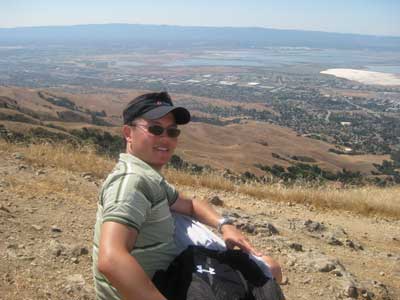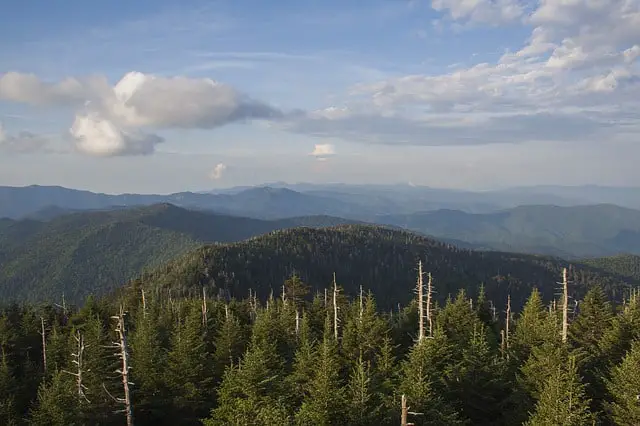
Sitting at 6,643 feet above sea level, Clingmans Dome is the highest mountain in Tennessee. Situated between the Great Smoky Mountains at the border of Tennessee and North Carolina, Clingmans Dome is famous for its concrete observation tower, which provides visitors with an expansive view of the smokies.
So, when to visit Clingmans Dome? Visit Clingmans Dome during the months of June, July, and October. Although you can visit Clingmans Dome during any season of the year, the best experience usually features warm, sunny days.
While June, July, and October are typically the best times to visit, the best time for you will be dependent on what you want to do at Clingmans Dome. To learn what Clingmans Dome has to offer at different points throughout the year, read on.
Why June, July, or October?
No matter what time of the year you visit, Clingmans Dome has a ton to offer.
However, the months of June, July, and October are simply better than the other options.
June and July offer warmth and sunshine without the grueling heat of August. October provides a chance to see the mountain without the crowds ‒ while still allowing for a climate that isn’t uncomfortably cold.
What to do on Clingmans Dome during June, July, and October
If you plan on visiting Clingmans Dome during one of these months, here are some of the best activities to partake in:
Hiking
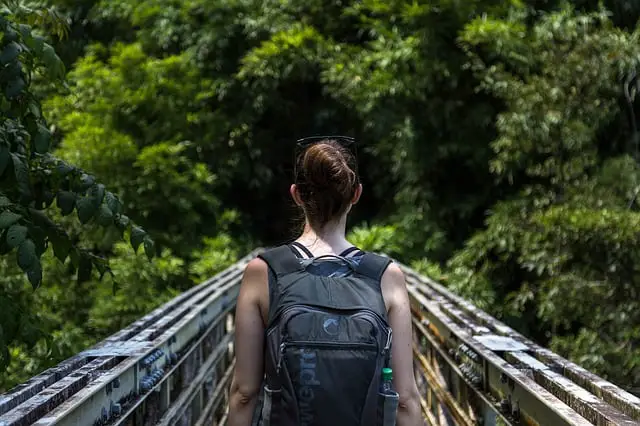
Clingmans Dome boasts several hiking trails, the most popular being the ½ mile paved trail stretching to the observation tower. This trail is well maintained and wide enough to accommodate strollers and wheelchairs. It’s pretty steep though, so take that into account before scheduling your trip.
Experienced hikers should consider a more difficult hike to Andrew’s Bald ‒ a high altitude meadow that offers a beautiful view of the surrounding mountain scenery. It’s also a great spot for a lunchtime picnic.
Photography
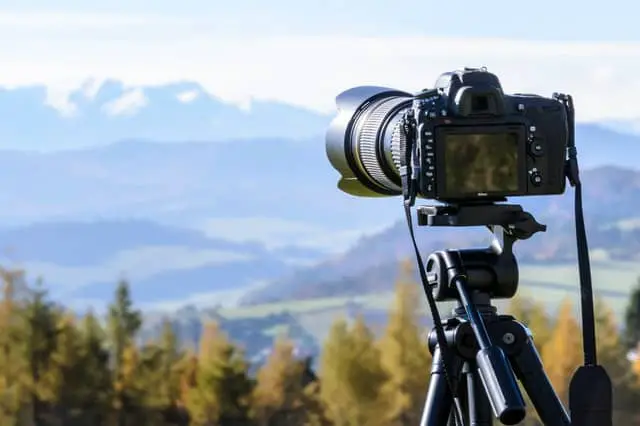
If you’re into photography, be sure to take your camera along to capture some exceptional shots of the magnificent trees, mountains, sunbeams, and cloud formations. And if you want a better vantage point to capture the surrounding area from, head to the observation tower. The broad view offered by the tower makes it one of the best locations for taking photos on Clingmans Dome.
Picnic
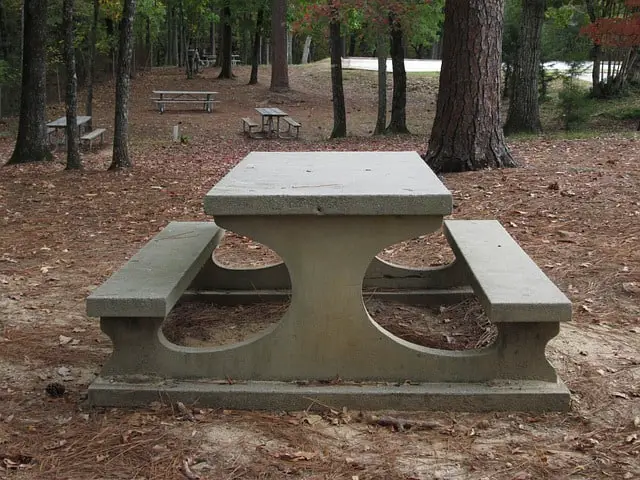
While Clingmans Dome doesn’t have a developed picnic with tables and grills, there are still plenty of awesome spots to spread out a sheet and enjoy some food.
One particularly convenient spot is in the grassy area near the entrance to the parking lot. Another good spot is Andrews Bald, but it only works if you can carry your food for about two miles of solid hiking.
Visit the observation tower
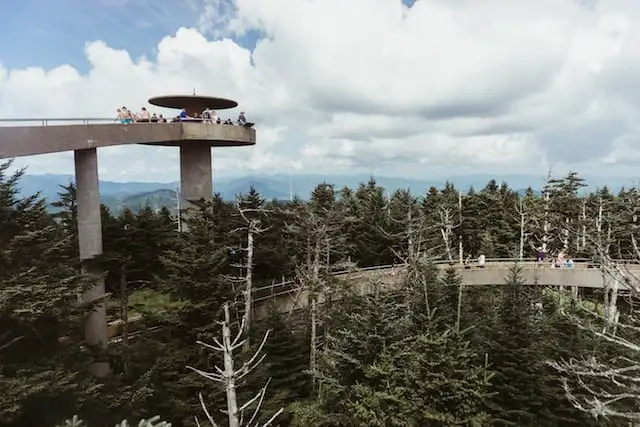
If you visit Clingmans Dome during one of the hotter months, you can cool off by heading to the top of the observation tower, as the temperature tends to be cooler at higher elevations. The cool escape offered by the tower is yet another reason that summer is one of the best times to visit Clingmans Dome.
Clingmans Dome Weather

The Smoky Mountains typically enjoy a mild climate. The hottest summer days rarely go beyond 90 degrees Fahrenheit, while the coldest winter temperatures are usually in the 20s.
Because of its high elevation, temperatures at Clingmans Dome do run 10-20 degrees colder than the surrounding area. Snowfall may occur at any time between September and May, so be sure to bring a jacket or dress in layers if you visit during the offseason.
Spring weather
Clingmans Dome gets fewer visitors in the spring months, making it an ideal time to plan a quieter vacation. I recommend scheduling your visit in March or April if you want to enjoy a crowdless Clingmans Dome while still retaining some warmer temperatures.
If you’re a fan of beautiful, vibrant flowers blanketing the landscape, you need to see Clingmans Dome during the spring season.
During the early months of the year, every corner of the view from the observation tower is in full bloom. You’ll see a wonderful array of colors all over the mountainside and valleys. The browns, purples, and whites of winter are all gone, having been replaced by shades of green and a rainbow of wildflowers.
If that isn’t reason enough to visit Clingmans Dome during the spring, here are a few more.
First of all, spring opens up more hiking trails. One trail in particular you’ll want to check out is the Andrews Bald Trail. Along this path, you’ll have a great view of the surrounding mountains. You’ll also get up close with the gorgeous wildflowers that pop up during the spring season. Once you’ve conquered Andrews Bald, You can also soak in even more terrific views by hiking a small portion of the Appalachian Trail ‒ one of the most popular trails used to explore the Smoky Mountains.
Additionally, spring is an excellent time to visit some of the area’s waterfalls, as they’re flush with melting snow due to their elevated flow volume.
Ramsey Cascades, The Place of 1000 Drips, and Abrams Falls are especially beautiful during this time of year.
Summer weather
Summer at Clingmans Dome is characterized by heat, haze, and humidity. It’s also the busiest season to visit, as many people use their summer vacations to enjoy the Tennessee wilderness.
Thunderstorms and afternoon showers are particularly common in June through August. The lower elevation areas in the Smoky Mountains usually experience temperatures in the 80s and 90s, while higher elevations like Clingmans Dome, Mt. LeConte, and Newfound Gap rarely see temperatures higher than 80 degrees Fahrenheit. During the evening, temperatures can reach lows of 60s and 70s.
Because many of the trails go from a lower elevation to a higher elevation, hikers should be prepared for a wide range of weather conditions and temperatures while trekking on or near Clingmans Dome during the summer. Temperatures also typically change as the weather patterns fluctuate, especially at the higher elevations ‒ which can make hiking even more unpredictable.
If you do visit Clingmans dome during the summer, you and your family will almost certainly have a relaxing and comfortable vacation. This is not only due to the temperate summer weather, but also the fun activities in the area.
The warmer months are perfect for outdoor activities like ziplining, whitewater rafting, and horseback riding. Wildlife like bear, turkey, and deer are very active during warm weather, so summer is great for nature enthusiasts looking to see rare wildlife. If you’re lucky, you might even spot the elusive elk. Also, the observation tower is the best spot to be if you want to a birdseye view of the local wildlife.
If you’re particularly concerned about the heat, don’t worry ‒ the waterfalls, swimming holes, and other elevated parts (like The Chimney Tops) will help you cool off.
To expand on that, the Chimney Tops Trail is one of the most famous in the entire park. The trail was destroyed by the 2016 wildfires, but has recently been renovated and reopened.
Driving up to this popular trail and taking a short walk will offer a beautiful summer wildflower experience. Along the way, you’ll see some sweet white foam flowers, the striking purple of Joe-pye weed, and the colorful crimson bee palm. This is a great trail for those seeking a hiking challenge, as it begins gently and gets progressively steeper as you get closer to the 1,300 elevation high point.
The summer season is also the best time to go rafting in the Smoky Mountains. There are several whitewater rafting outfitters just outside of Clingmans Dome. The upper Pigeon River is ideal for younger children. If you’re looking for more of a thrill, try rafting on the Lower Pigeon River instead.
Fall weather
Just like spring, fall in Clingmans Dome offers beautiful scenery at a comfortable temperature. During the months of September to mid-November, Clingmans Dome also begins to experience dry weather and cooler temperatures. The mountain begins to see peak fall color change during mid-October, and the first frosts begin in late September.
Fall is arguably the most beautiful time to visit Clingmans Dome, as the leaves around the mountain go ablaze with vibrant beauty. During this period, the leaves change from a lush green to a dazzling mixture of orange, yellow, and red.
In terms of temperature, fall in Clingmans Dome offers daytime highs in the 70s and 80s initially, while finishing most days with lows in the 50s and 60s. Clingmans Dome also sees the lowest level of rainfall during fall ‒ so you don’t have to worry about your vacation plans getting ruined by rain if you visit during the post-summer months.
As far as early snow goes, the higher elevation portions of the Dome will only see snow in November. The elevation at Clingmans Dome isn’t too high compared to many other mountains around the U.S., so snow doesn’t become an issue until the latter months of the year.
With cool, dry weather and some truly incredible foliage, the fall season is also one of the best times to go hiking at Clingmans Dome. Some popular fall hikes to explore include The Middle Prong Trail and Alum Cave Trail to Mt. LeConte ‒ both have some expansive views of the surrounding forests, allowing you to see the autumn colors of Clingmans Dome in all their glory.
The fall season is also a great time to visit for wildlife lovers. Animals like deer and bear are both quite active as they prepare for the winter season.
Despite how nice it is, you should know that fall is quite busy for Clingmans Dome, as many people flock to the park to experience the foliage and wildlife. Some areas of the mountain, such as Newfound Gap, can become especially crowded at this time.
You can avoid the crowds by going to some of the hidden gems nearby ‒ the Cataloochee Valley and Tremont are two of the best options.
If you’re particularly interested in viewing the fall foliage, the best way to do it is by driving Clingmans Dome Road. If you want to see the leaves in the most crowded parts of the road ‒ typically those nearest the mountain ‒ I recommend doing it by bike instead of by car. This will help you beat the traffic, which can become quite substantial during the day. But no matter whether you bike or drive, you will find endless spots to enjoy stunning views of the fall colors on Clingmans Dome Road.
So, how far in advance should you plan your fall trip to Clingmans Dome? Well, Clingmans Dome hosts most visitors during the last weeks of October, as this is when peak foliage is most likely to happen. To ensure hotel availability, it would be best to plan your trip at least three months prior to your visit.
Winter weather
Winter in Clingmans Dome lasts from mid-November through January.
The winter climate is generally moderate, but extremes in weather can occur at any time ‒ especially at the higher elevations. The edges of the winter season at Clingmans Dome usually see temperatures of 50 degrees or more. Highs can even get to the 70s on occasion.
Night is when things get a bit dicey temperature wise ‒ most winter nights at Clingmans Dome have lows at or below freezing.
If you want to see snow on the mountain, I recommend visiting in January and February. Snowfall in the lower elevations is typically around 7-8 inches. The Dome also experiences significant snowfall during the course of the winter season, with an average accumulation of over 100 inches per year.
A winter visit to Clingmans Dome is particularly amazing, thanks to amplified mountain views and an ever greater selection of outdoor activities to partake in.
If you only intend to engage in one activity during your visit to Clingmans Dome, I highly recommend doing some winter hiking. Hiking is a great activity all year round ‒ but the snowfall on the mountain adds a touch of tranquility and wonder that can’t be matched during the other seasons.
There are several amazing winter hikes for you to explore. My personal favorites include the Forney Ridge Trail ‒ a 1.8 mile trek from the parking lot ‒ and the gorgeous but challenging hike to Rainbow Falls.
If you’re big on snow sports, the best option is to go cross-country skiing. And one of the best spots to go skiing is on Clingmans Dome Road. The road is closed to motorized vehicles during the winter season, which means that you won’t have any interference as you ski down the snow-covered road.
This article is owned by Recapture Nature and was first published on September 18, 2019
If you do plan on visiting Clingmans Dome in the winter, you should also be aware that winter events can lead to the closure of high elevation roads, including the Newfound Gap Road. Though rare, the entire Smoky Mountain Park can also be closed after a heavy snowfall.
As far as crowds go, winter at Clingmans Dome is typically less crowded than the other seasons. The one exception is the end of December, when the Christmas and New Years holidays draw large crowds to the mountain.
How to Get to Clingmans Dome
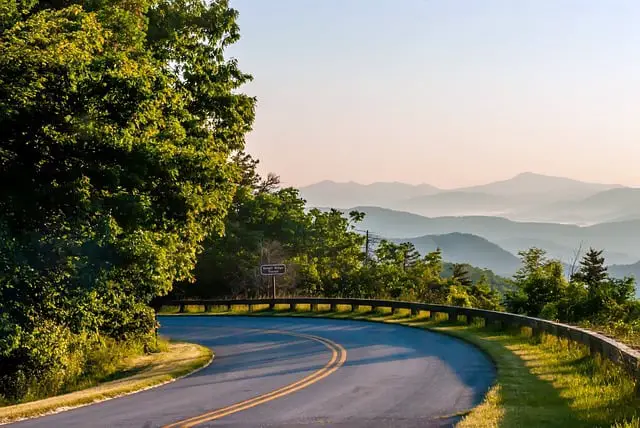
Clingmans Dome is located in the Smoky Mountains along the state-line ridge in Tennessee.
The drive to the mountain takes about an hour downtown Gatlinburg, as long as traffic is light. The drive is about 23 miles, and you can reach the Dome by following these directions:
- From Gatlinburg, take the main Parkway heading towards the Sugarlands Visitor Center.
- Go past the visitor center and travel for 13 miles.
- Turn right onto Clingmans Dome Road for 7 miles, which will lead into the parking area.
Also, note that Clingmans Road is closed in the winter from December 1st to March 31st. If you plan on traveling to the mountain during this time, you’ll need to plan for an alternate route.
This article is owned by Recapture Nature and was first published on September 18, 2019
Conclusion
Stunning waterfalls, impressive mountain views, historic cabins, and 100+ miles of hiking trails make Clingmans Dome one of the best outdoor destinations on the eastern side of the United States.
With so much to do, you should definitely take the time to pick the perfect season to visit.
While each season on the mountain offers a unique experience, the months of June, July, and October are typically the best times to visit.
When you visit during the warmer months of June and July, you’re bound to have an excellent trip ‒ thanks in large part to an abundance of hiking trails and outdoor activities like ziplining and whitewater rafting. You’ll also get to see some spectacular wildlife, including deer, bear, and turkey.
October is better if you’re looking for cooler temperatures, less crowds, and the vibrant fall colors. Hikes can also be a bit better during this time of year, as the more moderate climate makes the hikes a bit easier to deal with.
This article is owned by Recapture Nature and was first published on September 18, 2019
Clingmans Dome has something to offer no matter when you visit though ‒ so if you can’t get there during June, July, or October, I highly recommend booking a trip anyway.

